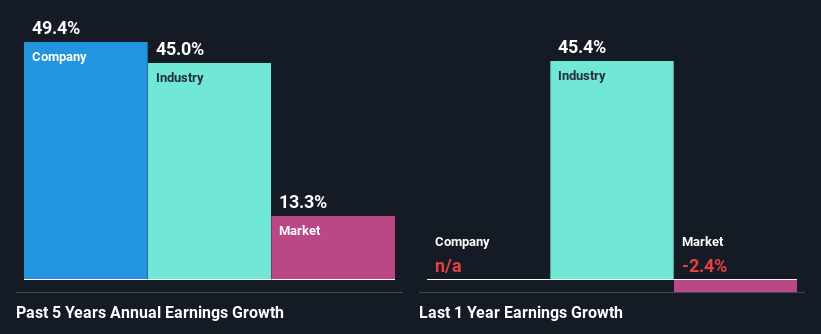Is Baker Hughes Company's (NASDAQ:BKR) Recent Performance Tethered To Its Attractive Financial Prospects?
Most readers would already know that Baker Hughes' (NASDAQ:BKR) stock increased by 2.6% over the past week. Given its impressive performance, we decided to study the company's key financial indicators as a company's long-term fundamentals usually dictate market outcomes. In this article, we decided to focus on Baker Hughes' ROE.
Return on equity or ROE is an important factor to be considered by a shareholder because it tells them how effectively their capital is being reinvested. Put another way, it reveals the company's success at turning shareholder investments into profits.
View our latest analysis for Baker Hughes
How Do You Calculate Return On Equity?
The formula for ROE is:
Return on Equity = Net Profit (from continuing operations) ÷ Shareholders' Equity
So, based on the above formula, the ROE for Baker Hughes is:
12% = US$1.9b ÷ US$16b (Based on the trailing twelve months to March 2024).
The 'return' is the yearly profit. That means that for every $1 worth of shareholders' equity, the company generated $0.12 in profit.
What Is The Relationship Between ROE And Earnings Growth?
We have already established that ROE serves as an efficient profit-generating gauge for a company's future earnings. Based on how much of its profits the company chooses to reinvest or "retain", we are then able to evaluate a company's future ability to generate profits. Assuming everything else remains unchanged, the higher the ROE and profit retention, the higher the growth rate of a company compared to companies that don't necessarily bear these characteristics.
Baker Hughes' Earnings Growth And 12% ROE
At first glance, Baker Hughes seems to have a decent ROE. Even when compared to the industry average of 13% the company's ROE looks quite decent. Consequently, this likely laid the ground for the impressive net income growth of 49% seen over the past five years by Baker Hughes. We reckon that there could also be other factors at play here. Such as - high earnings retention or an efficient management in place.
We then performed a comparison between Baker Hughes' net income growth with the industry, which revealed that the company's growth is similar to the average industry growth of 45% in the same 5-year period.
The basis for attaching value to a company is, to a great extent, tied to its earnings growth. What investors need to determine next is if the expected earnings growth, or the lack of it, is already built into the share price. This then helps them determine if the stock is placed for a bright or bleak future. Has the market priced in the future outlook for BKR? You can find out in our latest intrinsic value infographic research report.
Is Baker Hughes Efficiently Re-investing Its Profits?
The LTM (or last twelve month) payout ratio for Baker Hughes is 44%, which is moderately low. The company is retaining the remaining 56%. This suggests that its dividend is well covered, and given the high growth we discussed above, it looks like Baker Hughes is reinvesting its earnings efficiently.
Besides, Baker Hughes has been paying dividends over a period of seven years. This shows that the company is committed to sharing profits with its shareholders. Existing analyst estimates suggest that the company's future payout ratio is expected to drop to 32% over the next three years. Accordingly, the expected drop in the payout ratio explains the expected increase in the company's ROE to 15%, over the same period.
Summary
On the whole, we feel that Baker Hughes' performance has been quite good. In particular, it's great to see that the company is investing heavily into its business and along with a high rate of return, that has resulted in a sizeable growth in its earnings. Having said that, the company's earnings growth is expected to slow down, as forecasted in the current analyst estimates. To know more about the latest analysts predictions for the company, check out this visualization of analyst forecasts for the company.
Have feedback on this article? Concerned about the content? Get in touch with us directly. Alternatively, email editorial-team (at) simplywallst.com.
This article by Simply Wall St is general in nature. We provide commentary based on historical data and analyst forecasts only using an unbiased methodology and our articles are not intended to be financial advice. It does not constitute a recommendation to buy or sell any stock, and does not take account of your objectives, or your financial situation. We aim to bring you long-term focused analysis driven by fundamental data. Note that our analysis may not factor in the latest price-sensitive company announcements or qualitative material. Simply Wall St has no position in any stocks mentioned.

 Yahoo Finance
Yahoo Finance 
